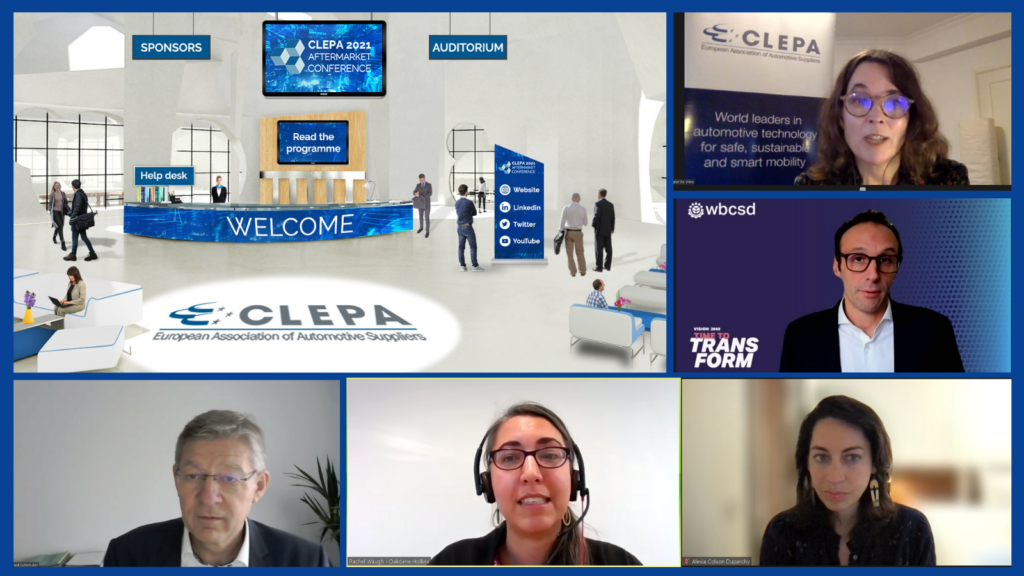Circular economy and sustainability are reshaping the automotive aftermarket
- Remanufactured automotive spare parts contribute substantially to the EU’s circular economy targets and in 2020 have saved annual emissions equal to those emitted by 120,000 EU citizens.
- Europe is the second largest market for remanufactured spare parts after the US.
- A comprehensive regulatory framework is needed to ensure free choice for consumers on vehicle maintenance.
The 12th edition of the CLEPA Aftermarket Conference, which is the second of 2021 held virtually, was dedicated to sustainability aspects in the aftermarket value chain. The audience, which included representatives from automotive suppliers, wholesale distributors and associations, received from the EU Commission the latest status on aftermarket relevant legislation related to Repair and Maintenance Information (RMI) and to the Motor Vehicle Block Exemption Regulation (MVBER) which is currently under review. CLEPA supports a robust legislative framework which ensures that suppliers are neither technically nor contractually limited in selling spare parts to the independent aftermarket and guarantees a free choice for consumers on where to get vehicles repaired and maintained.
With a total value of €4.7 bn of remanufactured spare parts sold by suppliers in 2020, the automotive aftermarket is already substantially contributing to the circular economy targets proposed by the European Commission in their Green Deal. CLEPA, together with the consultancy Oakdene Hollins, have recently published a study on the contribution of automotive to the circular economy targets, where results estimate that more than 800 kt CO2 were avoided in 2020, an amount equal to the annual carbon emissions of 120,000 EU citizens. The study included a sector-wide approach for qualifying the CO2 impact. It calculated the emissions avoided by considering the material retained during the remanufacturing process.

Other topics discussed included new electrified powertrains, the current shortage of raw materials and semiconductors as well as rising material costs. In this regard, industrial remanufacturing and repair of electronic components will gain further relevance for the repair and maintenance of vehicles. Industry representatives presented their vision on a circular economy approach by showcasing best practice examples.
Automotive suppliers and distributors are jointly working on the transformation of the aftermarket into a sustainable repair and maintenance business. Following the vision of a decarbonised automotive industry by 2050, as laid out by the World Business Council of Sustainable Development (WBCSD), suppliers and parts distributors are committed to defining a criteria for sustainability in the aftermarket, with proposals on a rating scheme and annual performance reviews. Suppliers and distributors are convinced that a sustainable aftermarket is a prerequisite, but much more will be needed to attract the future talents for the sector, as presented through the example of the Talents4IAM programme, which is dedicated to supporting the availability of a skilled workforce in the sector.
The aftermarket is an essential part of the automotive industry and an important contributor to the sustainability goals, but these need to be complemented with a fair and stable regulatory framework that supports open choice for consumers when it comes to their vehicle use and maintenance.
Attachments
In: Aftermarket, CLEPA News, Growth & Competitiveness



